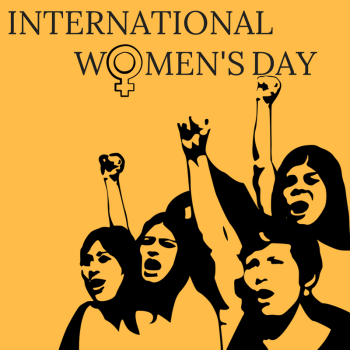International Women's Day: Standing in Solidarity with Justice-Involved Women

By Anne-Lise Vray, Communications Associate
Today, we wear red to stand in solidarity with our young justice-involved women. March 8 marks the 2017 edition of International Women’s Day, yet another occasion to remember that girls and women in the U.S. and across the world continue to face grave disparities and dangers in many – if not all - areas of society. When it comes to the justice system, girls are among the most vulnerable groups. They are the prime victims of the sexual abuse to prison pipeline, a term used to describe the pathways of gendered violence that lead girls into the juvenile justice system. And the numbers are terrifying. Reported rates of sexual abuse are more than four times higher for girls in the system than for boys. Rights 4 Girls cites that 1000 American children are arrested each year for prostitution and that 73 percent of girls in the juvenile justice system have histories of sexual and physical abuse, while 80 percent meet the criteria for a mental health diagnosis. Additionally, girls are twice as likely as boys to report five or more Adverse Childhood Experiences (ACES), traumatic or stressful periods during childhood that may impair the brain’s ability to function (ACES, i.e emotional, physical or sexual abuse, emotional neglect, household substance abuse etc). ACES may cause children to mistrust adults, have difficulties learning and/or making friends; all of which make young people vulnerable, including over-representation in youth-serving systems such as child welfare, juvenile justice and/or mental health systems.
Girls of color are more likely to end up in the juvenile justice system for acting out behavior than their white peers. African-Americans constitute 14 percent of the general youth population nationally, but one-third of the girls who are incarcerated. Native Americans are one percent of the general youth population, but Native American girls are up to 4 percent of girls incarcerated. Latina girls are confined at a rate of 47 per 100,000, compared to 37 per 100,000 of non-Hispanic white girls. Many times, young girls are incarcerated for behaviors that aren’t even criminal such as running away from home or breaking curfew, in addition to prostitution, in a misguided attempt by the Courts to make sure they are “protected.” This is a failed approach that makes young girls more, not less, vulnerable to harm.
Once put behind bars, girls face a whole new set of hard challenges and disparities, from lack of access to menstrual supplies, to violence (including shackling during delivery) and absence of care for pregnant women, or programming that fails to meet gender-specific needs.
We know that young women who get treatment, not punishment and incarceration, are able to build productive futures for themselves. We need to fight against harmful practices and disparities—not just today, but every day. Our young women are depending on us.

